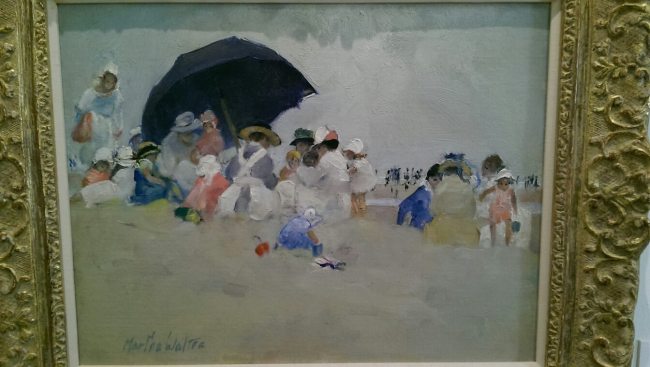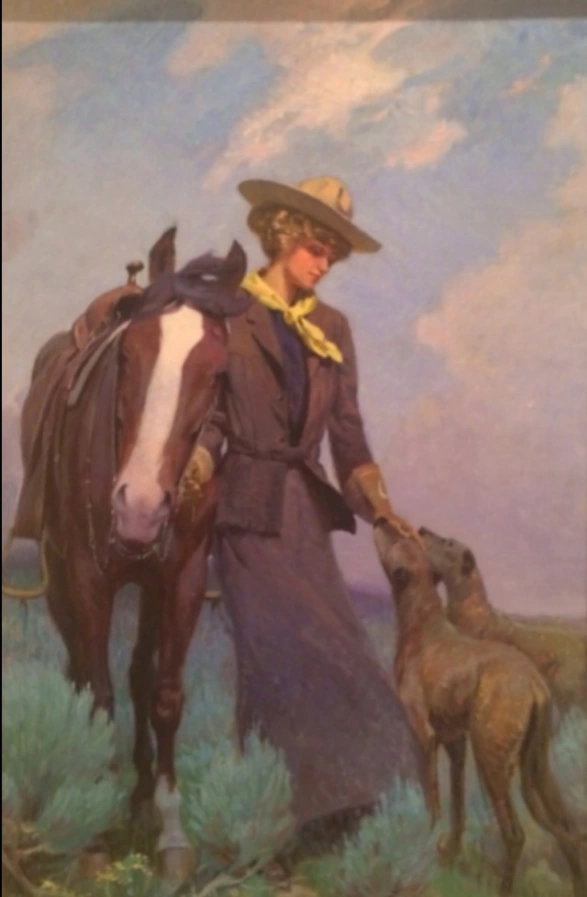Adrian Arleo (U.S., b. 1960)
Lead (Woman with Two Horseheads), 2002
Ceramic
Gift of Mark Landrum, 2013
Fred Jones Jr. Museum of Art, The University of Oklahoma
Adrian Arleo’s sculpture Lead (Woman with Two Horseheads) effectively uses lines and curves to draw the viewer’s eyes across the whole painting, starting from any of the three heads and moving to the others. I found that my gaze sometimes started at the woman’s head, drawn to its priority as the highest head, and then moved along her frame to those of the horses and sometimes moved in the other direction, drawn first to the horses’ shiny eyes. This phenomenon seems to put the woman and the horses on the same level, giving both equal primacy in the sculpture. The woman and the horses were also sculpted with the same striations and with no structural division in between, uniting them as one entity. However, the woman is finished with a brown glaze while the horses are finished with a blue one, which creates a division between the two species.
The work brings to mind for me the false dichotomy we create between ourselves and nature, and shows the oneness between us and other animals, as illustrated by the caress the woman seems to be bringing the horses into. However, it also speaks to the subordinate position we put animals in and the way we use them. This is depicted through the horses’ position as the woman’s legs, which calls to mind the way we use animals for transportation (the phrase ‘horsepower’ is conjured for me). The sculpture uses a natural-seeming medium, ceramic, combined with unnatural colors, such as blue horses, and combines natural forms in unnatural ways to bring to our awareness the ways in which we conceive of what is and isn’t natural, and in which we draw lines between ourselves and other animals that might not exist if we were to take a closer look at the world.










